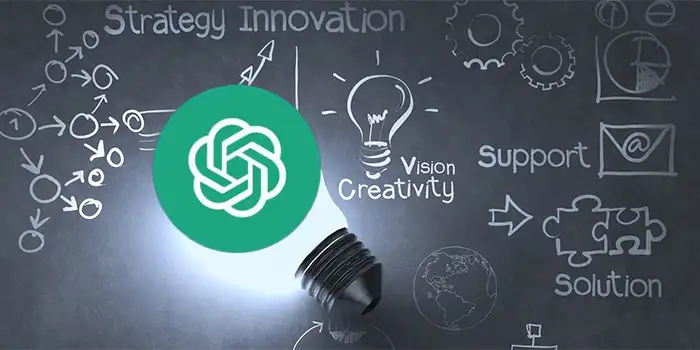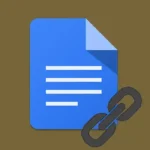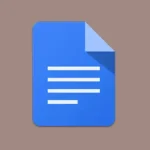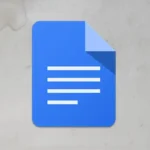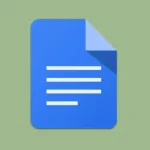When ChatGPT was launched, I have seen how students use this AI chatbot in their learning. That’s why it’s no secret that the rapid advancement of AI technology has revolutionized various industries, and the field of education is no exception. This only means that education has the potential to be reshaped.
ChatGPT is revolutionizing education by offering valuable assistance to learners. Through its advanced conversational abilities, it will empower students by enabling interactive and personalized engagement. It also delivers a dynamic learning experience that is tailored to individual needs. The capability of ChatGPT will enhance the way knowledge is acquired and shared.
In this article, you’ll learn:
Benefits of ChatGPT in Education
The capabilities of ChatGPT are really a game-changer because it has brought benefits to education. We don’t always have these kinds of technology where learners can really see the value of how it can help them in school.
1. Expanded Access to Information
We can see that students used books and encyclopedias a lot back when our educational system was first established to get the knowledge they required. But with ChatGPT, we can get answers to our questions right away.
Not only that, but ChatGPT also has access to a wide range of sources. It can find information from websites, articles, and even scientific journals.
So, if you’re curious about something, don’t hesitate to ask this AI chatbot because it can surely help you.
Back when I was a student, we didn’t have ChatGPT to help us with our research and projects. But just imagine if it was available during those days.
I can easily perform working on a science project instead of spending hours in the library or waiting for my teacher’s guidance.
2. ChatGPT Provides a Personalized Learning Experience
Let’s you’re studying a math subject specifically about fractions, sometimes it can really be a bit tricky to understand the concept.
Well, with ChatGPT, you can ask all your questions about fractions and it will explain things in a way that makes sense to you.
One thing I love about this AI chatbot is it will understand how you learn best. ChatGPT will do its best to adapt to your learning style as long as you know how to prompt it well.
Who would have thought that there will be technology that could cater to a learner’s preferences and provide them with the type of learning that works best for them, isn’t that amazing?
Another awesome thing about this AI chatbot is it can remember what you’ve learned in your previous discussion on the same chat box. It can refer back to your previous conversations and build on the knowledge that you’ve already gained.
3. Continuous Learning Support
In the past, students had few choices for support if they needed assistance with their classes or assignments. They can only ask their teacher during class breaks or stay after school for extra help.
But sometimes, students can’t get the help that they needed especially when they reached home. Today, we have ChatGPT which would change things for the better! It will provide continuous support whether it’s during class, after school, or even late at night.
You can simply type in the problem to ChatGPT and it will provide you with a step-by-step explanation and solutions. This AI chatbot can be your virtual tutor that is available 24/7.
What’s even more amazing is that it can support you with different subjects such as math, science, or English. This AI has a wide range of knowledge and can assist in different areas.
4. Valuable Resource for Educators
The benefits of ChatGPT are not only for students but also for teachers who work really hard to help us learn and grow. Sometimes, professors need additional resources to support their teaching.
There are times when teachers wish to liven up their classrooms and introduce new concepts. ChatGPT will be handy for them because they can simply ask for different examples and explanations related to the topic they are teaching.
ChatGPT can also provide teachers with a wealth of information and this will make their job easier. However, it’s important for our teachers to double-check the information using their expertise and knowledge.
So the benefits of ChatGPT extend beyond just students. This is also a valuable tool that empowers professors saving them a lot of time.
5. Develops Critical Thinking Abilities in Students
Developing critical thinking abilities in students means they have these super cool skills that help them think deeper by analyzing the information very well.
So here’s how it works. When students interact with ChatGPT, they get the opportunity to ask questions and explore different perspectives.
For example, if they are curious about exploration, they can ask ChatGPT a question about the benefits and drawbacks of sending humans to Mars.
ChatGPT will then provide them with the information, but instead of accepting them right away, they can start to think critically.
They will wonder if there are any potential risks or ethical concerns involved. This will challenge their thinking that’s why they will perform some other research or talk to experts about it. They will form their perspectives and get the ability to analyze difficult issues by doing this.
Challenges of Implementing ChatGPT in Education
So, you’ve now heard about the awesome benefits of using ChatGPT in education, right? But guess what? Just like any technology, there are also some challenges when implementing ChatGPT in classrooms.
1. It can Lead Students to Overreliance on Technology
One of the biggest challenges that I saw when implementing ChatGPT in education is students can be over-reliant on this AI technology. I know that it’s great to have such a smart tool at our fingertips, but it can make students forget the joy of independent thinking.
We don’t like a classroom where students have access to ChatGPT all the time whenever they have a question or needed some help with their homework.
Try to imagine practicing your writing skills, but instead of brainstorming and putting your ideas on paper, you rely on ChatGPT to generate the whole paragraph for you.
Even while it could be alluring to take the easy route, doing so prevents you from expressing yourself in your own words and from honing your writing style.
In situations where students heavily rely on technology like ChatGPT, it can hinder their ability to think for themselves and find unique solutions.
Students must remember that technology is a tool that will assist them, but it’s not a substitute for their minds and abilities.
2. Requires Substantial Training for Educators
Another challenge that I saw when implementing ChatGPT in education is that it requires substantial training for educators for them to get comfortable with the technology.
Let’s say one of the professors has been teaching for many years already. She’s really knowledgeable about the subject, but when it comes to using new technology, they might feel overwhelmed.
It would be difficult for them to navigate the system and use the right prompts. They may occasionally even require assistance from the class’s tech-savvy pupils.
We can clearly observe how quickly technology is developing in the modern world. Although many instructors are welcoming it with open arms, some find it difficult to adjust.
That’s why if schools decided to implement this AI technology, it’s important to provide proper training and support to educators.
3. Pose Ethical Considerations Regarding AI-Generated Content
You know, using ChatGPT in education can raise some important questions about ethics because we need to think about the content generated by AI like ChatGPT.
AI-generated content means that a computer program, like ChatGPT, creates information on its own. I realize this is amazing, but we need to be cautious since the information it provides is not always true or dependable.
If a student is doing research in school and they seek their answer from ChatGPT, how would they know if it’s true? What if they won’t use their critical thinking abilities like the one I’ve mentioned on the benefits of using ChatGPT in education?
AI programs like ChatGPT don’t have the knowledge or understanding as humans do. This AI language model has just learned from what they’ve been trained on, and that training might have some mistakes or biases that students should be careful of.
4. Create Concerns about the Loss of Human Interaction
When we rely heavily on technology like ChatGPT for learning, there’s a worry that we might miss out on the special connection we have with our teachers. As you can see, teachers are considered superheroes in the classroom.
They are the one who is responsible for guiding us, inspiring us, and providing that personal touch that makes our learning meaningful.
Try to imagine a world where all our lessons were taught by ChatGPT. That would be too cold because an AI is teaching you. Students would miss the unique qualities that make teachers so special.
There are already situations where technology has taken over certain tasks like the rise of online classes and virtual meetings which students felt a sense of detachment. It’s the little things like eye contact and gestures that make human interactions so special.
5. Hesitations about the Accuracy of ChatGPT
Hesitations about the accuracy of ChatGPT have been a concern not only in education but also in its overall use. The accuracy of ChatGPT is a crucial aspect that must be considered when implementing this AI chatbot in education.
A lot of people expect that when ChatGPT spits out an answer to their question or prompt, they would think that it is accurate and reliable information.
The fact is that language can occasionally provide erroneous information because of its complexity and the large quantity of data it handles.
If a student uses ChatGPT without double-checking the information, it could lead to confusion and misinformation in their work. The worst part is they can have a failing grade.
ChatGPT is a powerful tool, but it’s not perfect. When used in the classroom, it needs to be double-checked by verifying multiple sources.
How to Effectively Integrate ChatGPT in School
Effectively integrating ChatGPT in education is very crucial that’s why it requires careful planning and consideration. Here are some key steps that I believe should be done in ensuring its successful implementation:
- Define Clear Objectives: Establish the precise objectives and learning results you hope to achieve by integrating ChatGPT into the teaching and learning process. This will guarantee curricular alignment and assist in guiding the integration process.
- Identify Appropriate Use Cases: Determine which particular situations or regions ChatGPT can improve learning experiences in. For instance, it may be utilized to offer immediate feedback on assignments, ease information collection and research, or assist students in problem-solving exercises.
- Provide Training and Support for Educators: Provide thorough training courses and other materials to assist educators with ChatGPT’s capabilities and possible uses. This entails being aware of its constraints, developing efficient methods for integrating technology into instruction, and teaching students how to use it appropriately.
- Encourage Critical Thinking: Alongside the usage of ChatGPT, stress the value of critical thinking abilities. Teach students how to verify facts, assess information, and critically evaluate ChatGPT replies. Encourage them to investigate, confirm, and ponder many points of view.
- Promote Collaboration and Interaction: Alongside the usage of ChatGPT, stress the value of critical thinking abilities. Teach students how to verify facts, assess information, and critically evaluate ChatGPT replies. Encourage them to investigate, confirm, and ponder many points of view.
- Monitor and Evaluate its Impact: Continually evaluate how well ChatGPT is working in education. To determine its influence on learning outcomes, student engagement, and the entire educational experience, collect input from both instructors and students. Make any necessary modifications and changes using this input.
- Maintain a Balanced Approach: ChatGPT can improve learning, but it shouldn’t take the position of educators, who play a crucial part in the process. Place a strong emphasis on the value of human direction, mentoring, and individualized training in the learning process. Instead of serving as a replacement for interpersonal contact and knowledge, ChatGPT should be viewed as a tool that supports and complements instruction.
These are the steps that I believe would enrich the educational experience when ChatGPT is integrated into education. By following these steps, educators can effectively integrate ChatGPT into their classes. They can harness the potential while ensuring a balanced and responsible approach to learning.
How to Use ChatGPT Responsibly for Learning
Using ChatGPT responsibly for learning is a must to ensure the effectiveness and quality of learning. We must remember that learning is a wonderful journey that goes beyond simply finding answers from ChatGPT.
1. Learners Must Understand Its Purpose
Recognize that ChatGPT is a tool for information and support, not a replacement for independent thought or learning. Learners must recognize that it’s not an all-knowing oracle. Just like our teachers, ChatGPT has a limitation.
I know that ChatGPT can serve as a valuable guide for learners and its purpose is to provide assistance and guidance in the learning process. Students must consider it a helpful guide as they travel through their educational path.
2. You must Verify the Information
Using ChatGPT responsibly for learning means that you should always verify the information it provides. Every time it spits out answers to your questions or prompts, always verify it by double-checking other sources.
There are a few easy procedures you may take to verify the facts. First, make an effort to cross-reference the data with sources you can trust, such as books, respected websites, or information from your teacher. Comparing it to information from other sources can also allow you to confirm its accuracy.
3. Don’t be too Over-reliant on ChatGPT
When using ChatGPT for learning, it’s important to avoid becoming overly reliant on it. Although ChatGPT is a useful tool, it’s vital to keep in mind that there are many other resources available.
It’s essential to keep your learning process in balance. Don’t rely on ChatGPT for all of your information and answers. Explore different resources instead, including novels, reference books, and conversations with your instructor and classmates.
4. Learners Must Engage in Self-Reflection
Reflecting on one’s learning is a necessary part of using ChatGPT appropriately. When you reflect on your learning while using ChatGPT, you must ask yourself what you have learned, how you learned it, and was the learning effective.
You may evaluate the precision and applicability of the information you get from ChatGPT by reflecting on your behavior. It enables you to assess if the responses match your expectations and knowledge of the questions.
5. Continue to Seek Guidance from Experts
This is an AI model and not a human expert that’s why it’s important to continue to seek guidance from experts. ChatGPT can provide helpful information but experts such as teachers and professors, possess deep knowledge in their fields.
When utilizing ChatGPT, it’s critical to be aware of its limits and realize that information might not always be complete or correct. Because of this, students should actively seek out professional advice to confirm and add to the knowledge they receive via ChatGPT.
Final Thoughts
The use of ChatGPT in education has opened up exciting possibilities for the way we learn. As students will journey through this advanced AI technology, it is crucial to approach it with a sense of responsibility and awareness.
Yes, ChatGPT has a vast knowledge and it can offer a world of information at our fingertips. But, we must remember that true learning goes beyond mere answers. It lies in the journey of exploration, critical thinking, and human connection.
We must actively participate in the learning process as learners. Instead of becoming unduly dependent on ChatGPT or any other technology, let’s utilize it as a guide to aid in our own development.

